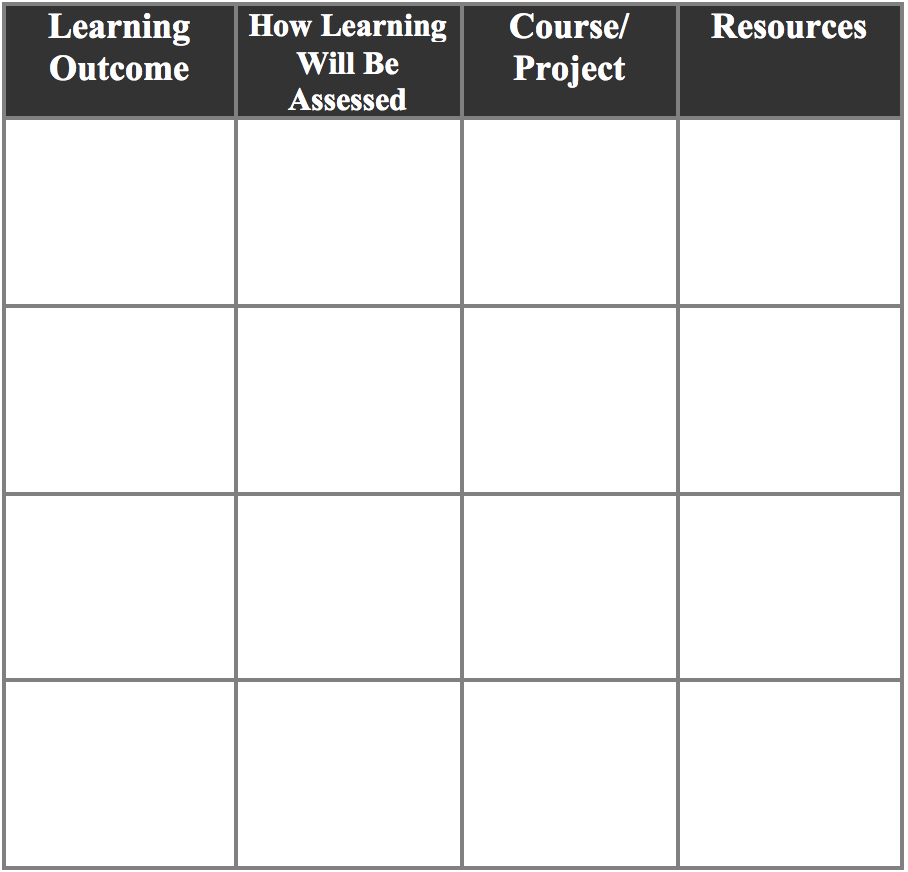Identify Evidence
Once you have clear learning outcomes in place, the next phase is to determine what constitutes evidence that learning has taken place. If you are re-examining your department's or program's whole curriculum, then the next thing to do might be to create a curriculum map. The curriculum map helps you determine what courses are meeting learning outcomes and where they are being introduced, emphasized, and reinforced. Click the link here - "How to Create a Curriculum Map" (from Jim Munger, AVP Academic Planning, Boise State University) or in the Resources drop down above to see a spreadsheet with instructions on creating a curriculum map.
In many cases evidence of learning outcomes accomplishment will come from student artifacts- assignments from classes, pieces of writing, projects, exams. In other cases, evidence takes the form of carefully constructed surveys.
|
|
Remember, assessment should tell you how well your students have met the learning outcomes, not necessarily how well they have learned the content. |
|
|
When considering assessment, ask yourself what you would consider as “evidence” that learning outcomes have been met. What would you need to see or observe? |
How to assess that learning outcomes have been met
Keep in mind that learning outcomes can be assessed either directly or indirectly. Priority is always given to direct measures as they are more objective, concrete, and measurable. Indirect measures can also be helpful as a means of supplementing direct measures. Below are some examples direct and indired methods of assessment that your program can use to determine that learning outcomes have been met.
Direct Measures
- Course assignments (Secondary reading of an essay, problem from a homework set, paper, project, performance)
- Pre/post program exams
- Learning portfolio
- Comprehensive exam, thesis, dissertation
- Standardized tests
- Senior capstones
Indirect Measures
- Student exit surveys
- Alumni/ Employer surveys
- Focus groups
- Interviews
- Course evaluations
- Learning portfolio (reflection components)
Find additional information on direct and indirect methods of assessment for program learning outcomes in the From Measures to Findings handout from the Office of Instruction and Assessment at the University of Arizona.
The Southern Education Foundation has a wonderful Building Your Assessment Toolkit that helps to identify the type of assessment needed for a program's goals and provides thorough descriptions, strengths, and weaknesses of a number of assessments.
Confused on how learning outcome assessment differs from the grades students get in their classes? Check out the Grading or Assessment? That is the Question handout from the Office of Instruction and Assessment at the University of Arizona.
Aligning Learning Outcomes with Assessment
While it may seem obvious, it is worth mentioning the need to make sure each learning outcome is aligned with an assessment. It can be easy to come up with a handful of assessments to only later realize that one or two of the learning outcomes haven't been addressed by the assessments. Additionally, you don't want to find that you have been using assessments that don't actually address any of your learning outcomes. One easy way to ensure that your learning outcomes and assessments are aligned is to fill in a Learning Outcome Assessment Alignment Grid. The form to the left is a modified version of L. Dee Fink's Worksheet for Designing a Course (Fink, 2003, p.23).

